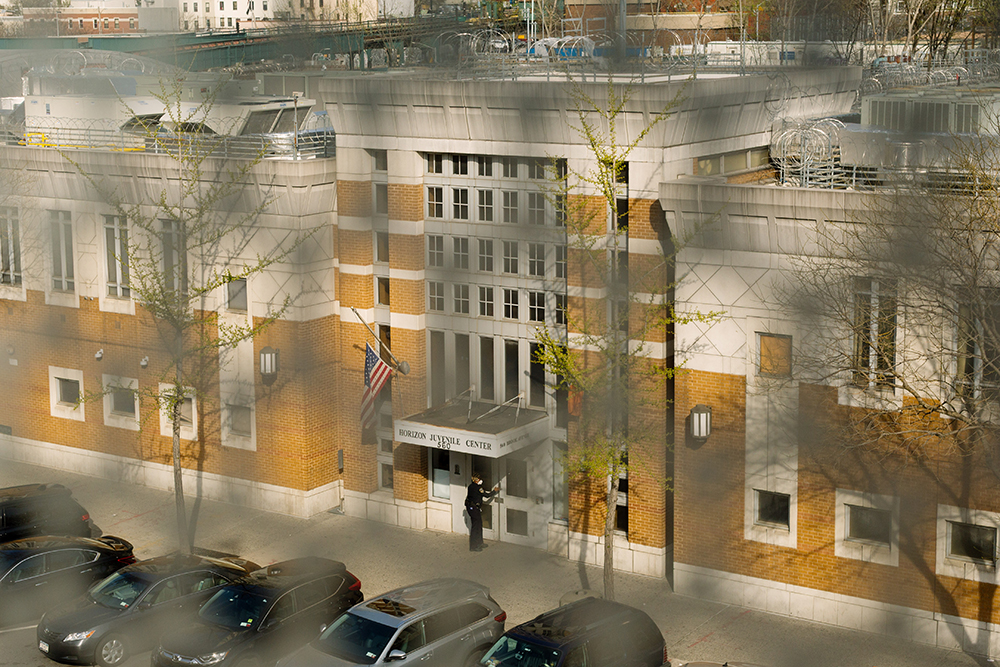NEW YORK — It started with a simple question two months ago: Who are the youth in detention who are particularly susceptible to the coronavirus, and what is being done to get them out? The question was posed by a New York City Council member to the mayor and the Administration for Children’s Services, the agency charged with operating the two secure detention facilities in New York City.
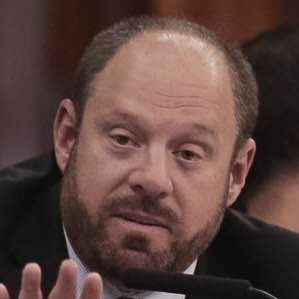
Rory Lancman
“We still don't know what has been done with the young people who ACS has identified as being particularly vulnerable in case they contract COVID-19,” said City Council member Rory Lancman, who wrote the letter inquiring about the medically vulnerable youths on March 19.
The hurdles that lawyers and youth advocates have found highlight a complicated process involving several agencies, elected officials and nonprofit groups, all with different agendas. The inability of the mayor’s office to answer Lancman’s questions highlight what administration critics say is a youth justice system in disarray, lacking coordination and marked by an absence of leadership.
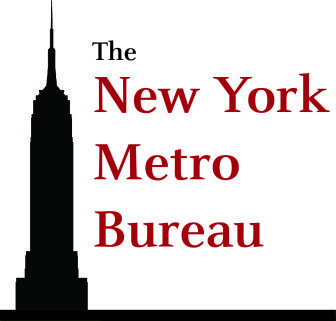 The consequences of the administrative confusion have been devastating.
The consequences of the administrative confusion have been devastating.
The lack of quick, decisive action has led to the spread of the disease, at least one death of a staff member and an outbreak of violence in an understaffed and underequipped facility, critics and youth advocates say. The efforts to release youth have been further complicated by a byzantine youth system in the city that spreads accountability to a variety of agencies and offices and that has not been transparent about information or communicating with one another, critics say.
That was compounded by the lack of a coherent policy and leadership out of City Hall. The questions about that leadership take on renewed urgency as the city and state begin taking steps to reopen and fears of a second wave of the virus are the central concern of health officials.
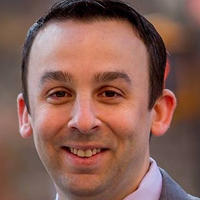
Keith Powers
“It’s unclear to me at the end of the day who presses the button to make the decision, or even whispers into the mayor's ear and says, ‘This is how we need to do this,’” said City Council member Keith Powers, chair of the Criminal Justice Committee. “All the agencies that answer to the mayor's office should speak with one voice — there should be one person speaking on behalf of all of them, in my view. I think that's always been true but that's certainly true right now during a pandemic.”
Two months after Lancaman pushed the administration for answers, advocates continue to urge a wider release of youth and lawyers argue their case in the courts. The multiple efforts to get the youth out or moved elsewhere to facilitate social distancing are playing out against a backdrop of what one source familiar with the conditions inside the facilities described as “viral chaos.” They didn’t want to be named due to fear of repercussions on the job. (A research brief by the Justice Lab at Columbia University assesses the progress of the state in releasing people who are in county lockups for technical violations.)
The coronavirus policies and protocols developed by commissioners at city agencies and inside City Hall are impossible to implement inside what are effectively jails, say lawyers, advocates and the people who work there. Guards are working without N95 masks and instead rely on flimsy cloth masks that are only helpful in not spreading the virus, but do very little to protect against contracting it. Parents say that youth are not having their temperature taken as ACS says they are. And even if they were, a carrier can be infected for up to two weeks before showing symptoms — plenty of time, staff say, to spread around the facility.
The situation is desperate, leaving staff on the frontlines scrambling to get equipment on their own and turning to the internet for advice. They are met with either silence or mixed signals from the city, staff said. They paint a picture of complete disarray — the resources to prevent the spread of the disease are not being delivered and the expert subcontractors required to properly sanitize the facility are not being brought in. Meanwhile, the youth remain at risk as do the staff charged with keeping them safe.
“With the equipment we are getting and the staffing we are dealing with, we can’t keep them safe,” one employee familiar with the conditions inside the facilities said. “We literally can’t. All we can do is pray.”
‘It's more dangerous than we expected’
As the epicenter of a global pandemic, New York officials were slow to respond. Mayor Bill de Blasio resisted calls to shut down city schools, telling New Yorkers: “Go about your lives, go about your business.” Gov. Andrew Cuomo said during a press conference on March 2 that it wasn’t the state’s “first rodeo.” In a matter of weeks the city would look like something out of a dystopian fantasy. New Yorkers would be scuttling to grocery stores in masks, driving by piles of bodies stored in refrigerated trucks and going to sleep with the steady drone of sirens every night. Cuomo changed his opinion in a later press conference. "We underestimated this virus. It's more powerful. It's more dangerous than we expected," he said.
When the mayor wanted to shut down the city and encourage us to “shelter in place,” the governor stood in his way. The personal resentments that framed their relationship before the virus did not change as the rest of the city, state and world did.
The two leaders infamously got into a public squabble over what language to use to shutter the city in response to the pandemic. Cuomo insisted that it was his decision. In a recent report on juvenile justice and the pandemic, Youth First Initiative identified two governors in the nation who used their authority to issue executive orders to thin their state’s youth population. Cuomo is not among them, despite the health and welfare of detained youth being identified by health experts as a crisis.
Once the enormity of the threat became clear, officials recognized that reducing the number of incarcerated youth and adults would be the only way to protect against its spread in jails, especially for a disease that could weaponize a door handle or turn a piece of cutlery into a vector.
Before the virus ravaged the region, New York City and its agency in charge of youth in custody, ACS, led the way among big cities in reducing their population. According to its own most recent numbers, ACS has reduced its youth population more than neighboring Connecticut, a state with more than five million fewer residents. It is a remarkable accomplishment, many critics acknowledge, but one that was slow to develop as city officials reacted slowly to the deadly threat the pandemic posed.
“The health and safety of the youth and the staff in our secure detention facilities is our top priority,” said Samuel Chafee, an ACS spokesman. “ACS reviewed the health conditions of all youth in detention and shared relevant information with our city agency partners. While ACS has no authority to release young people from detention, we provided other entities with the information they used to determine which youth could be safely released to the community.” The collaboration resulted in about a third of the young people in detention being released to the community, he added.
Either the district attorneys or the Corporation Counsel are in charge of releasing youth, depending on whether the youth is charged with a serious or a minor charge, said Stephanie Gendell, an ACS administrator.
ACS, working with the city’s Law Department and the Mayor’s Office of Criminal Justice, has whittled the number of youth in its custody to 92 — 14 youth in Horizon Juvenile Center and 67 in Crossroads Juvenile Center (the two secure detention facilities) and 11 in nonsecure facilities around the city. Officials said they began a case-by-case review of any remaining youth of all categories at detention facilities at heightened risk of COVID-19 due to underlying conditions to determine whether there were safe options for release, sources familiar with effort said, who wanted to remain anonymous due to fear of repercussions on the job.
But a lack of leadership and coordination out of City Hall has been costly, critics said.
‘The immediate release of the youth from custody’
“We don't see ACS as the bad guys in this scenario,” said Lancman, a Democrat who chairs the council’s Justice System Committee., in an interview. “I think MOCJ [Mayor’s Office of Criminal Justice] has dropped the ball in not coordinating the effort around the release of young people, as it is focused almost entirely on adults, and I think that Corp[oration] Counsel and the district attorneys have not been aggressive enough in proactively identifying young people who can be released. That doesn't make them the villains of the story but it doesn't make them the heroes either.”
He has written to ACS Commissioner David Hansell and Sara Hemmeter, the acting deputy commissioner of the Division of Youth and Family Justice.
They responded with: “We are working with MOCJ to mirror the process that was used with DOC [Department of Correction] to work with the DAs on the issue. While ACS has no authority to release a youth from detention, ACS is continuing to advocate with the appropriate parties so we can minimize the number of youth in all our detention facilities during the crisis.”
They have worked with the city Law Department to reduce the juvenile delinquent, or nonsecure, population.
“ACS has no greater responsibility than to keep the children and youth in our care safe and healthy, and we appreciate your outreach and partnership to support us in doing so during this challenging time,” they wrote.
ACS says they identified the youth who are medically vulnerable and turned the list over to the MOCJ. Michael Klinger, Lancman’s legislative counsel, said he doesn’t know if any of the city district attorneys have decided to release any youth.
The mayor’s office declined to comment for this story, as did the Corporation Counsel and MOCJ.
‘More could be done’
In late March, lawyers for the Legal Aid Society of New York sued ACS in Supreme Court in an attempt to get more youth out of the secure detention sites. But a court case is a deliberative process that has stretched out for weeks while the disease spread inside both city juvenile facilities, Crossroads Juvenile Center and Horizon Juvenile Center.
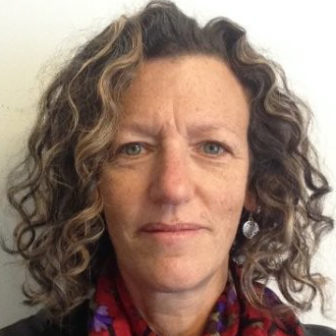
Lisa Freeman
Lisa Freeman, the lead attorney on the case, acknowledged that ACS significantly reduced the number of youth in nonsecure and limited detention facilities — those known legally as juvenile delinquents. They have their cases heard in Family Court. But she said she is concerned about the youth left behind.
“I think the most important thing people need to understand right now is that holding and incarcerating these kids at this time puts them at a greater risk of danger, and puts the staff at greater risk of danger,” she said. “More could be done to allow youth to be in the communities with their families during this incredibly traumatic time.”
Freeman had success. Two of the youth were released, possibly as a result of the lawsuit’s public pressure. One youth’s fate was left outstanding: John Doe #5. He is a scrawny 13-year-old, 110 pounds and about 5 feet 5, held in secure detenion on charges of second-degree murder.
There was no proof that John Doe #5 had any underlying health conditions that placed him at greater risk due to the pandemic. Instead, his lawyers were arguing that the conditions inside Crossroads were so bad that they posed a risk to his health. On April 7, his fate was decided. Judge Michael L. Katz ruled that ACS had not acted “deliberately indifferent” to John Doe #5 despite “areas of deficiency which requires respondent’s immediate attention and remedial action ...”
Freeman said the process to get youths out took a long time, but that the various agencies and offices involved did a good job of trying to get the detained youth out. ACS is making a concerted effort coordinating with other city agencies to get the kids out of its custody, she said. But she is worried about the conditions of the kids left behind. She said the idea that social distance could occur in the facilities is “laughable,” echoing the concerns of staff and experts.
“We were very troubled by the testimony that we heard. There seems to be a serious distance between the guidance that is given and how it is implemented,” she said. “The other piece is that the instruction they have been given is very vague and lacks organization. Even at its best what we are hearing from the facility level is that none of the things they claimed have been put in place.”
John Doe #5 was sent back to Crossroads where he remains under one-on-one supervision for his protection. The guard assigned to him is to stay six feet apart from him at all times.
As that case spent weeks going through court in Manhattan, several youth justice advocacy organizations called for the release not just of youth in ACS custody, but for young people 18 to 25 in Rikers Island too. The Raise the Age NY Coalition, a group that worked to get the raise the age law passed, sent a letter to de Blasio urging him to free as many young people as possible. One of their key recommendations is to increase transparency about medically vulnerable young people held in detention and jail, and to transfer eligible youth held in secure juvenile detention to nonsecure facilities to facilitate social distancing and curtail the spread of the virus.
“As you have acknowledged, the COVID-19 crisis presents painful challenges for New York City’s youth, particularly low-income youth of color who rely on public schools and other programs for not only education and enrichment but meals and other basic necessities,” the letter said. “Young people whose lives are already incalculably disrupted are also surely feeling the stress that this virus is placing on their parents and other family members.”
Kate Rubin is the director of policy and strategic initiatives of Youth Represent, one of the 22 organizations that signed on to the letter to the mayor, as well as to the governor. She said it is urgent that the mayor act swiftly before it’s too late.
“We are trying to get people out of detention centers,” she said. “They are by their very nature places where the virus can spread rapidly and physical distance to have in place is impossible. And that could be deadly.”
No end in sight
The mayor, due to an obscure relic of state law, has the ability to release people in Rikers Island as long as the released inmate is placed in a job program. He does not have a comparable power in the youth system.
That falls to the district attorneys in the five boroughs — Brooklyn, Manhattan, Queens, the Bronx and Staten Island.
In the youth system are adolescent offenders, a new class created by the raise the age law, who committed a violent felony at 16 or 17.
As DAs are elected, each have to answer to a voting public that will have varying opinions on criminal justice, depending on the borough.
A source inside the Brooklyn district attorney’s office familiar with the process, echoing what is widely considered the position of the other DA offices, said it’s difficult to make the call to petition the court to release these youths.
“There are a lot of elements that are working against the release of these kids,” said the source, who didn’t want to be named because he did not have permission to speak on the matter. “Those that we keep are ones we'd be unlikely to agree to release. Ultimately it’s the judge who signs off on that. The DA’s imprimatur means a lot, but a judge won’t be inclined to sign off on conditionally releasing these kids.”
Since Lancman’s initial inquiry, ACS developed what they called a “consolidation plan.” The plan designated Horizon, the facility in the Bronx, as the site to house and treat kids who were diagnosed with COVID-19. They moved the healthy youths from Horizon to Crossroads, in Brooklyn.
But a violent incident six weeks ago complicated the plan. Five youths in Crossroads were able to get out of their rooms and attack guards. In a rare intervention, the New York Police Department responded with 50 officers to help restore order in the facility. The five involved in the incident were then sent back to Horizon. By the time they were removed from Crossroads, 35 staff had been diagnosed with COVID-19, and one, Patricia George, had died.
‘So damn confusing’
Lancman said that what may seem like a dizzying mix of agencies and offices with overlapping authority and power may seem confusing to the person viewing it from a distance. It is less so for him as a member of the City Council with oversight authority. But even with that rarefied vantage point, the juvenile system can be challenging.
“What for us creates what feels like opacity is the Rube Goldberg-like nature of the juvenile justice system. It’s a very fragmented system with different kids handled differently based on their age,” Lancman said. “Or even to a greater degree that exists in the juvenile justice system — on the idiosyncrasies of the prosecuting authority.”
In an adult case, someone could end up with five different kinds of justice, depending on which borough he was charged in, he explained.
“But that's on steroids when you’re talking about a young person,” he said.
In the youth system, not only are you dealing with different district attorneys, but the possibility of an entirely different prosecuting authority if the case gets moved to Family Court. The accused is no longer charged by a district attorney, but by a city lawyer from the Corporation Counsel.
“Now, right there, you have now doubled the complexity of the juvenile justice system,” Lancman said. “In the adult system you don't really have, ‘You could be in jail, or you could be in a group home and that group home is not run by the Corrections Department, it’s run by one of any number of nonprofit providers.’ Like everything gets complicated, everything gets more complex when you're dealing with young people. And so it's harder to get your arms around the whole thing. And that could have the effect of making the system more opaque because it can seem so damn confusing.”
Keith Powers, Lancman’s colleague on the City Council who has been overseeing the release of adults from the system, agreed. The process of getting people out of jails and detention facilities has been slowed by a mix of the scale of bureaucracy and the lack of coordination among them from the mayor’s office, he said.
“I'm just concerned that we just don't have a plan right now,” he said. “It’s complicated because of the nature of this — you have the courts, you have the DAs and judges, you have the jails and the DOC, you have the Correctional Health Services, operating on its own, you have the Mayor’s Office of Criminal Justice doing broader policy stuff, you have the Board of Correction doing oversight and you have the NYPD doing the arrests, and with juvenile system you have ACS and the Corp Counsel and Probation.”
Powers said he thinks there is a lesson to be learned about streamlining the criminal justice system in the city, one that can be applied when the pandemic passes.
“At the minimum, during a public health crisis, it strikes me that somebody in charge of coordinating all these agencies should be there with the mayor speaking with one voice, saying, ‘Here's what we're doing, Here's how conditions are being addressed.’ But also doing a check on them making sure every agency is equipped to be able to do their job right now and they have the staffing resources, and they have the right policies in place. I mean we have a food czar right now — we should definitely have a czar in charge of the six or seven agencies that I just mentioned.”
‘Not everyone can come home’
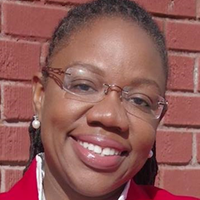
Alicka Ampry-Samuel
The phone call came late at night. It was the mother of one of the youth inside Crossroads. City Council member Alicka Ampry-Samuel had met her on one of the family visits she does at Crossroads as part of her constituent services. Ampry-Samuel is familiar with Crossroads. The facility is literally in her backyard, just down the street from her district offices in Brownsville, Brooklyn. She had developed a relationship with the mother and her son.
She said she recognizes that a young person who ends up there is often the product of other failures, whether it’s unstable housing or unemployment. She tries to connect families with services that can help the situation, and help the youth in custody.
So when the mother was worried that her son had contracted the coronavirus she felt comfortable calling her, Amprey-Samuel said. The mother said she was worried about her son and wanted to know if he was OK. The mother couldn’t visit her son since ACS had temporarily suspended in-person visits as part of the coronavirus protocol.
As soon as Amprey-Samuel got off the phone with the mother, she called a commissioner at ACS, she said. He reassured her that the youth was not exhibiting the symptoms of COVID-19. She called the mother back and told her she would monitor the situation. She said the mother’s concerns puts a human face on the bureaucratic back-and-forth over the whereabouts of the medically vulnerable youth. With visitations suspended both the youths and their families have been wracked with anxiety.
“It was a difficult conversation, she was fearful of what was going on,” Amprey-Samuel said. “She is worried that it might trigger some other issues — emotionally; he has emotional instability not seeing mom during this frightening time.”
But Amprey-Samuel said the lack of communication from the mayor’s office has been frustrating during the pandemic.
“At this point I am disappointed in what has been happening with the administration. We’re all disappointed from every level with what is going on. Someone needs to take leadership with this.”
She wants the youth to be able to ride out the pandemic safely, and hopes that as many youth as possible are released. But she acknowledged that isn’t a reality for some of the young people locked up.
“It's unfortunate not everyone can come home — that's just the reality of it,” she said. “We have a young man detained and it’s a rape charge — how do you talk to the alleged victim about that? There are some that are incarcerated for murder, where there is a body attached to it. It's unfortunate — they're not the majority. But still it’s a very difficult situation.”
She said she is still pressuring the mayor’s office and ACS to make sure the youth that are left behind have resources to help them.
“They need it,” she said. “Especially now.”
This story has been updated.
The Tow Foundation, which funds the New York bureau, is part of the Raise the Age NY Coalition.
